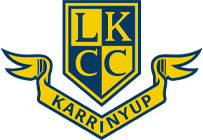The Lake Karrinyup Country Club is widely acknowledged as Western Australia’s premier private golf club
and has been regularly rated as one of the top ten golf courses in Australia.
Arnold Hodder, Dr Ralph Crisp and Keith Barker formed a Flotation Committee in mid-1927, preceding Lake Karrinyup Country Club’s incorporation date of 16 February 1928. The trio’s aim, according to club minutes: ‘was to draft the initial outlines of a country club with provisions for golf games, bowls and outdoor sports.’
Hodder, an enterprising real estate agent and then-honorary secretary of Perth Golf Club, knew of a rundown property called Careeniup. Crucially, its remote location and the lack of services to the area contributed to the market’s snub.
Momentum for the ‘new happening’ was everything, and so six additional influential figures from Perth business, industry, medical, social and sporting spheres were recruited.
A prospectus was issued on 19 August 1927, leading to an intensive campaign for members, and it was determined that revenue raised from a membership level of seventy would enable purchase of the 353-acre property. That momentous sale (which included a lake) took place on 27 September 1927. Furthermore, the scene was set for a landmark night-time meeting in Perth’s Palace Hotel, on 30 November 1927, where draft rules and regulations were placed before members and prospective members. It was at this forum where the club’s first General Committee, headed by Dr Dixie Clement, was elected. Within a year Lake Karrinyup had 250 foundation members.
A masterstroke by the new club was obtaining the services of Alex Russell to design its golf course. All kudos to Keith Barker for enticing Russell to the West, underpinned by their longstanding friendship forged from the annual interstate golf series and mutual sporting interests. Russell was not only a champion golfer (1924 Australian Open winner), but the erudite Australian-based design partner of Dr Alister Mackenzie.
Lake Karrinyup went into recess in December 1941, making way for occupation by the Women’s Auxiliary Australian Air Force (WAAAF)—a state that lasted for the remainder of the war.
In its entirety, our facility was transferred to the armed forces and primarily used as a training establishment for trainees.
But authorities didn’t ride roughshod, as the handover was done respectfully.
Indeed, commencing in 1942 the WAAAF occupation provided an annual rental income of almost 700 pounds.
Lake Karrinyup has hosted innumerable high-profile golf tournaments and, remarkably, staged the 1930 State Championships within its first year of operation.
The 1952 Australian Open, won comfortably by Norman von Nida, was a coming of age for both the club and its layout, while two years later Lake Karrinyup played host to the Lakes Cup (America vs Australia).
The Australian Open returned in 1960, won narrowly by Bruce Devlin, and then again in 1968, where Jack Nicklaus prevailed over a red-hot field.
Gary Player’s victory in 1974 was his seventh and final Australian Open title.
The 1979 WA Open created a hitherto unknown buzz at Lake Karrinyup, being a major plank of the State’s 150th anniversary celebrations.
A glittering array of world stars descended upon Lake Karrinyup, including all the top Australian golfers.
Seve Ballesteros, riding high from victory in the Open Championship at Lytham & St Anne’s, thrilled galleries at Karrinyup with his booming drives and short game prowess—but he was no match for Peter Jacobsen, a young American golfer.
The new millennium welcomed the Johnnie Walker Classic (2002 and 2003), won by Retief Goosen and Ernie Els, respectively, and the ISPS Handa Perth International (2012, 2013, 2014 and 2016), plus several ISPS Handa Super Sixes events.
The Australian Amateur Championship has also been played at Lake Karrinyup.
While things are travelling smoothly today, older and more-senior members will recall periods when the club was bedeviled by financial strain. Progressive management of Lake Karrinyup’s land holdings—specifically, its sub-division first started in 1968 and concluding in 1980—exorcised a good deal of the worry and debt. Years later, the sale of land behind the sixteenth tee, between 2007 and 2009, resulted in cash reserves that have further safeguarded the club’s future.
Another expression of LKCC’s progressive management is its handling of matters pertaining to the constitution. By adhering to community standards and expectations, Lake Karrinyup positions itself as a family first, equal opportunity facility.
The club’s treatment of its second clubhouse, nudging ever-closer to the age of fifty, is no less an example of astute decision-making. Although talk of demolition was briefly canvassed, further deliberation led to an ultra-tasteful refurbishment of the clubhouse, its surrounds and the pro-shop.
Brilliantly, the architect has created the near-perfect marriage between the membership, its clubhouse and course.
Alex Russell’s splendid layout has been well-tended down the years, clearly shown by the respect accorded in 2007 by Michael Clayton Golf Design (MCGD) and then OCCM, when revamping it. Later, though, the course was undermined by poa infestation and issues from other grasses, and so the club made a decision to introduce a two-grass policy (couch and bent).
Much of this morphed into the significant course works program of 2017–18, involving upgrading the greens, bunkers, and addressing air circulation. Michael Cocking was employed to undertake these tasks, ably assisted by an in-house shaper. Construction was supervised by Fraser Brown.


























